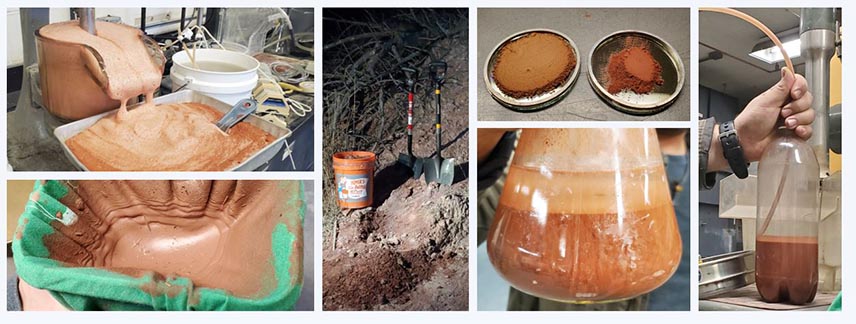South Dakota Mines students in the Department of
Materials and Metallurgical Engineering (MET) got their hands dirty in a
unique National
Science Foundation funded project designed to delve into both the art and science
behind local clay pottery and ceramics.
Student teams, enrolled in the junior-level design
course, were challenged to create glazed pottery using minerals found in the
Black Hills. They were tasked to look at tests made on various clays gathered
from locations around the area: Tower Road, Corral Drive, Sturgis Road and at
the Pacer Minerals facility in the town of Custer. Students then had to process
the samples in ways to make them most useful for both pottery and glazes. The
course was part of the new Art &
Engineering curriculum being developed in the MET department at Mines.
The core disciplines in materials and metallurgical
engineering focus on how the chemical makeup and nanostructure of various metals
and materials impact their overall properties. Metallurgical and materials
engineers seek to find the best ways to process materials and metals into
valuable products. These fields of study have broad applications across many
industries, and the Mines degree in metallurgical engineering was just named the most
unique major in South Dakota by College Raptor.
“For many students, this is the first class where
they have an open-ended problem,” says Katrina Donovan, Ph.D., in the
Department of Materials and Metallurgical Engineering at Mines. “We told them
to design a ceramic product, and we did not tell them what the product had to
be; they had to engage their creative brains to come up with both the right
questions and the right answers to the problems they encountered.”
 These photos show one process a team used to refine dirt into pottery clay.
These photos show one process a team used to refine dirt into pottery clay.
Mines artist in residence Deborah Mitchell worked
alongside Matthew Whitehead, director of the university’s APEX Gallery, to offer
students instruction in pottery and ceramic making. These workshops gave the
students basic skills needed to turn clay into pottery. Students then did
materials science and engineering work to process the various clays and
minerals at their disposal and design an end product. The process of creating
value out of raw materials and minerals can be challenging.
One student team used clay gathered from the Tower
Road area above Rapid City and made a ceramic mug with 3D scan of the head of
the MET department, Michael West, Ph.D. Other teams made shot glasses with the
university logo on the bottom, a set of bowls, a teacup and a replica of a
vintage figurine statue of the university mascot, Grubby.
Faculty members distributed students with various
skills in pottery making, geology and minerals processing across the five
teams. Jon Kellar, Ph.D., professor in the MET department, says the teamworking
skills students developed during the project was an important part of the
pedagogy. “We were fortunate the teamwork was really good,” says Kellar. “The
hands-on part of these projects kept students interested -- many spent long
hours in the lab as they got involved in the creative work.”
The course was also completed with help from local
industry partners. Pacer Minerals in Custer provided some of the important
components for successful pottery glazes. Coeur mining company had unique
minerals needed for pottery at the Wharf gold mine near Lead, SD. Dakota
Pottery in Sioux Falls provided consulting and the tools needed to make
ceramics and pottery.
The final products are on display in the MET
department inside Mines Mineral Industries Building. Future students taking
junior design will build on the success of this cohort using new tools in the
department including a potter's wheel and kiln located in the university
foundry.
Mines
will also offer a summer camp on “Science of Pottery and Glasses” for high
school students starting the first week of August. The camp, funded by the
National Science Foundation, is geared toward students who have an interest in
both art and science.